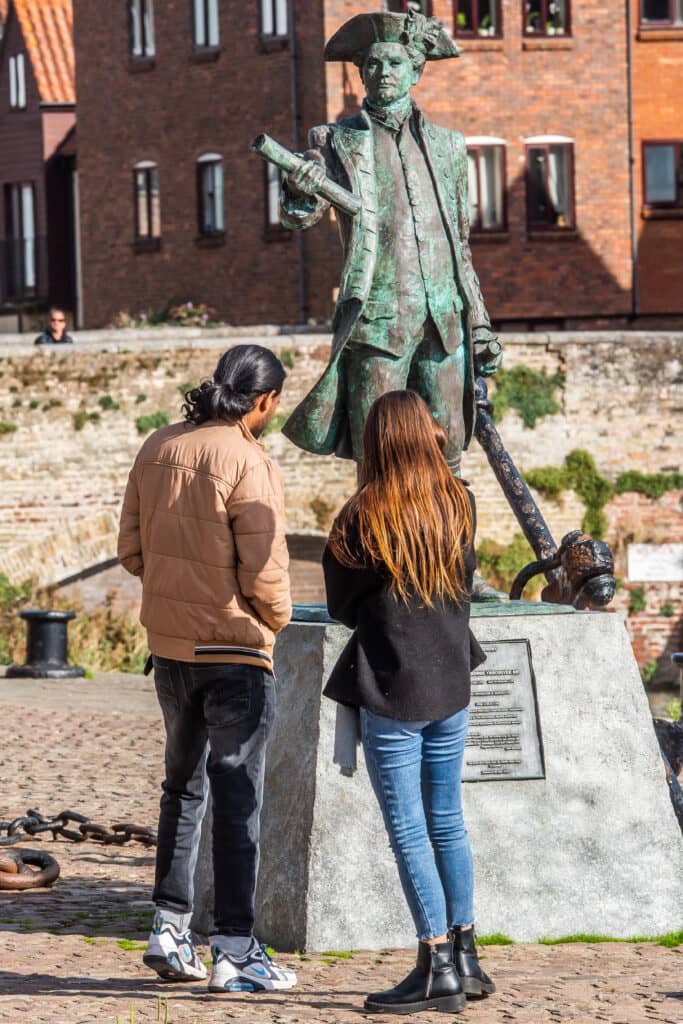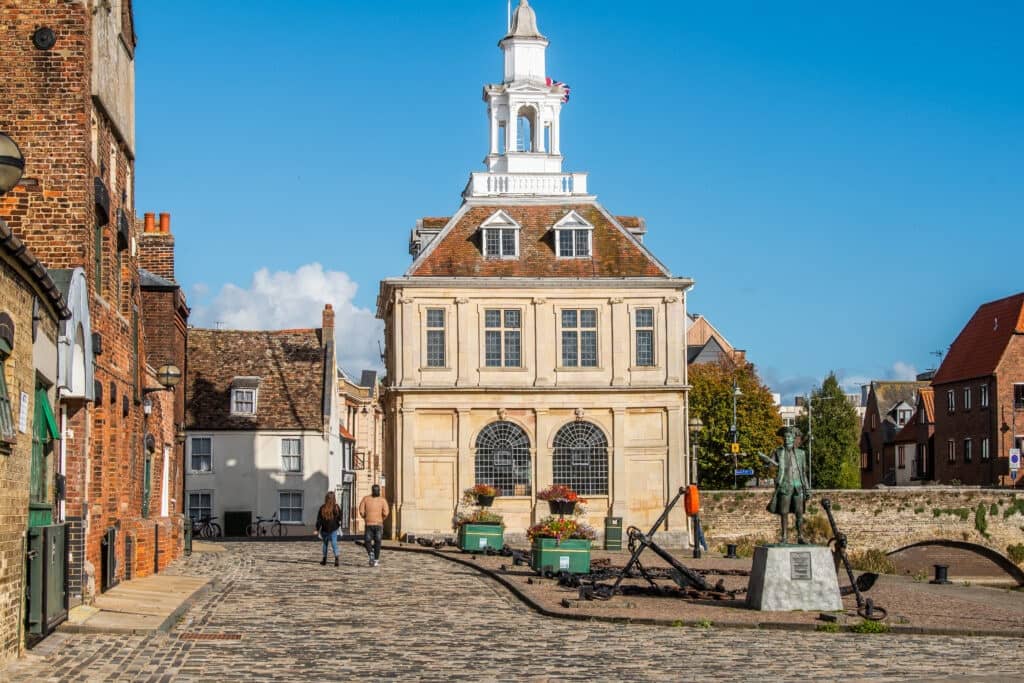The maritime town of King’s Lynn was once a departure point for hundreds of young Norfolk adventurers hungry to see the world. The Lynn streets were full of sailors and merchants from overseas, spilling onto wharfs and quaysides from ships of every kind, with crews from all over the world. Vessels were unloaded and restocked from busy warehouses, corn was exported, and wines imported, a trade depicted on two figureheads of the towns Custom House.
Architect Henry Bell designed Custom House, then a centre for collecting tax on goods imported and exported from the town. In one of the upstairs rooms worked a diligent chap called John Jasper Vancouver, but it was his son, George, who gave the family name to landmarks across the globe. George Vancouver joined the Royal Navy at the mature age of 13 and accompanied Captain James Cook on two voyages including his last to Hawaii (1772-75 and 1776-80). On 1st April 1791, Vancouver took command of an expedition to chart North America’s northwestern Pacific Coast, from San Diego California to Anchorage Alaska including the Canadian province of British Columbia. His mapping measurements were so precise they can still be used today.
Vancouver Island, the city of Vancouver, Vancouver in Washington, Mount Vancouver on the Canadian American border and even New Zealand’s sixth highest mountain are all named after that man who set sail from a small town in West Norfolk when he was just a boy. His statue now stands on Purfleet Quay.


